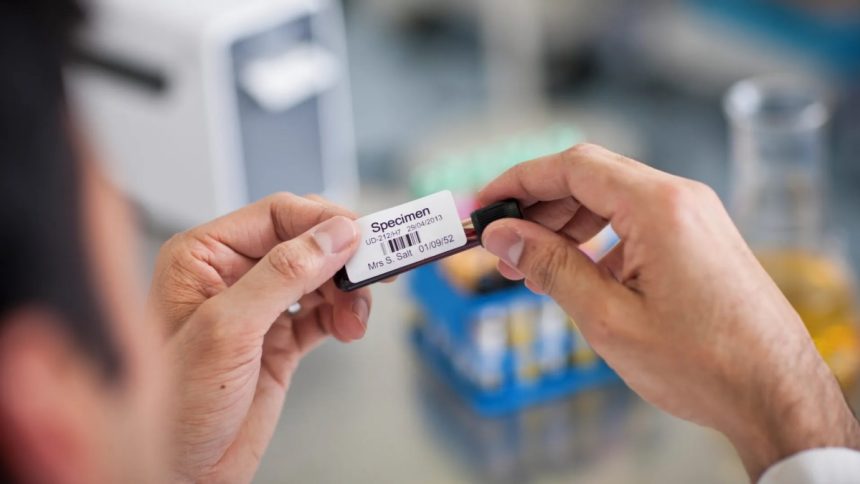Chemical resistant labels are vital components in various settings, from research laboratories to large manufacturing facilities. The labels are essential for identifying substances, ensuring safety, and complying with regulatory standards. To perform effectively under harsh conditions, these labels must be engineered to withstand exposure to aggressive chemicals, extreme temperatures, and other demanding environmental factors. The technology behind chemical resistant labels is intricate, involving a combination of materials and manufacturing processes that work together to ensure durability and reliability.
Key Components of Chemical Resistant Labels
Substrate
The foundation of any chemical resistant label is its substrate, which is the base material upon which the label is printed. Typically, substrates used for chemical resistant labels are synthetic films like polypropylene, polyester, or vinyl. These materials are selected for their inherent resistance to a variety of chemicals. Polypropylene, for example, is known for its lightweight and flexible nature, making it an excellent choice for labels that need to conform to curved surfaces. Polyester, on the other hand, offers exceptional strength and durability, making it ideal for labels that will be exposed to harsher environments. Vinyl is often chosen for its water resistance and good chemical compatibility, making it suitable for both indoor and outdoor applications.
The thickness of the substrate is another critical factor that manufacturers consider when producing chemical resistant labels. Thicker substrates typically provide greater durability, which is particularly important in industrial settings where labels may be subjected to abrasion, tearing, or exposure to solvents. Conversely, thinner substrates may be more flexible, allowing for easier application in tight spaces. The choice of thickness is determined by the specific application and the environmental conditions the label will face.
Adhesive
Adhesives play a vital role in ensuring that chemical resistant labels adhere strongly to various surfaces, even when exposed to aggressive chemicals. The adhesives used in these labels are specially formulated to resist solvents and provide a strong bond on different substrates, such as metal, plastic, or glass. Acrylic adhesives are a popular choice due to their strong bonding capabilities and resistance to chemicals. These adhesives can be engineered to provide either permanent or removable bonds, depending on the intended use of the label. Permanent adhesives are ideal for labels that need to remain in place over extended periods, while removable adhesives allow for easy repositioning or removal without leaving residue behind.
Printing Processes
The printing process used to create chemical resistant labels is equally important. One common method is thermal transfer printing, whereby a ribbon coated with ink is heated and pressed onto the substrate, transferring the image onto the label. The ink used in this process is typically resin-based, which provides excellent resistance to chemicals and abrasion. This method is favored for producing high-quality, durable labels that can withstand the rigors of industrial and laboratory environments.
Another printing method is direct thermal printing, where heat is applied directly to the substrate. This process causes the label material to darken, producing the printed image. While this method is suitable for labels that do not require high-resolution printing or long-term durability, it may not be ideal for applications where exposure to chemicals is a concern. The printed image may fade or deteriorate over time when subjected to harsh conditions.
Protective Coatings
To enhance the durability and longevity of chemical resistant labels, protective coatings are often applied to the label surface. Laminates are one such solution, providing additional protection against chemicals, abrasion, and UV radiation. These laminates are typically made from materials like polyester or vinyl, which can create a barrier against harmful substances. The application of a laminate can significantly extend the life of the label, especially in environments where exposure to moisture or chemicals is prevalent.
Overcoatings are another layer of protection that can be applied to labels. These coatings enhance the label’s resistance to chemicals and environmental factors while also improving its appearance and readability. Overcoatings can be clear or tinted, allowing manufacturers to customize the label according to specific aesthetic preferences or branding needs. These additional layers not only protect the printed image from fading but also provide a surface that can be wiped clean, making it easier to maintain the label’s readability in demanding environments.
Specific Applications and Considerations
Chemical resistant labels have a wide range of applications, each requiring specific considerations based on the environment and the materials involved. In laboratories, for example, labels must endure exposure to various chemicals, including acids, bases, and solvents. High-resolution printing is often necessary for clear identification of samples and reagents, as accurate labeling is crucial in scientific research and experimentation. The labels must be resistant to smudging or fading, as any loss of information could lead to catastrophic errors in experiments.
In industrial settings, labels may need to withstand not only harsh chemicals but also extreme temperatures and outdoor elements. Labels used in these environments often require specific adhesive properties to ensure they remain securely attached to various surfaces, including metals, plastics, and wood. The ability to maintain adhesion in fluctuating temperatures and under exposure to chemicals is paramount for labels used in manufacturing processes, where safety and compliance are critical.
Hazardous materials labels are another category that requires careful consideration. These labels must comply with specific regulations and standards, such as the Globally Harmonized System (GHS), which governs the classification and labeling of chemicals. In addition to being durable, hazardous materials labels must include clear warning symbols and hazard statements that are easily visible and resistant to fading. The clarity and durability of these labels are essential for ensuring workplace safety and compliance with regulatory requirements.
The Future of Chemical Resistant Labels
As industries continue to evolve and face new challenges, the technology behind chemical resistant labels will also advance. Innovations in materials, adhesives, and printing technologies will likely lead to even more resilient and versatile labeling solutions. Manufacturers will continue to explore ways to enhance the performance of chemical resistant labels, ensuring they meet the ever-growing demands of various applications.
Conclusion
In conclusion, the technology behind chemical resistant labels is complex and multifaceted, involving a careful selection of substrates, adhesives, printing processes, and protective coatings. These elements work in harmony to produce labels that can withstand harsh chemicals, extreme temperatures, and demanding conditions. As industries rely more on these labels for safety, compliance, and identification purposes, understanding the technology behind them becomes increasingly important. The future of chemical resistant labels promises even greater advancements, ensuring that they remain an essential tool in laboratories, manufacturing facilities, and beyond.
Lynn Martelli is an editor at Readability. She received her MFA in Creative Writing from Antioch University and has worked as an editor for over 10 years. Lynn has edited a wide variety of books, including fiction, non-fiction, memoirs, and more. In her free time, Lynn enjoys reading, writing, and spending time with her family and friends.















